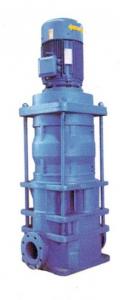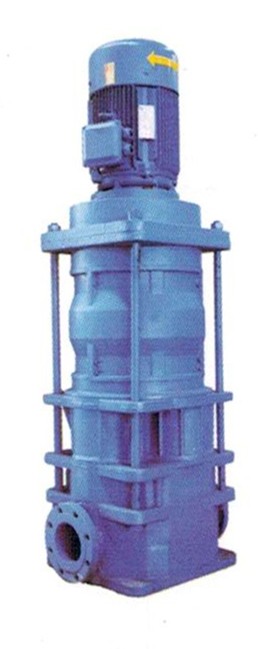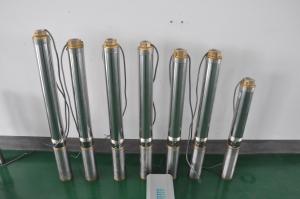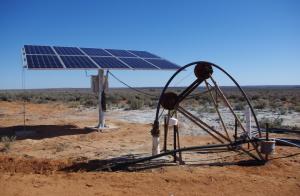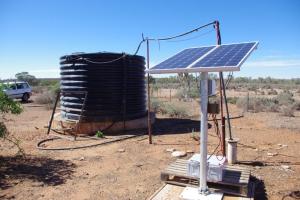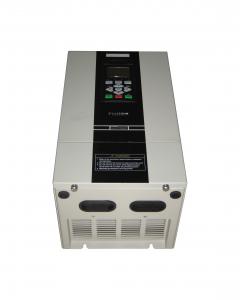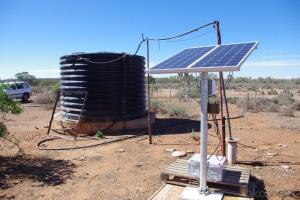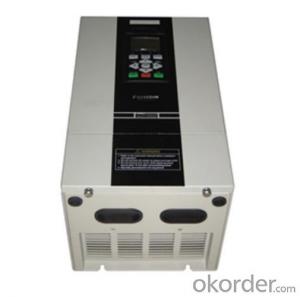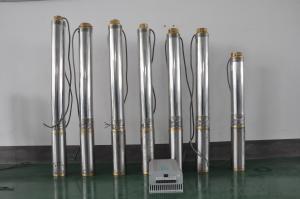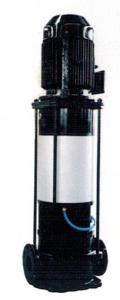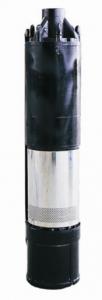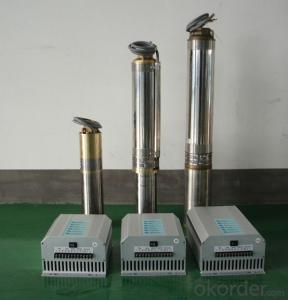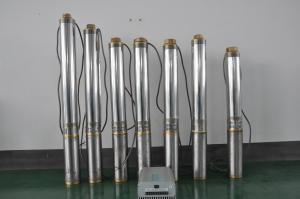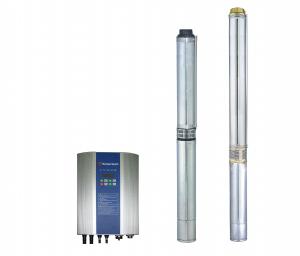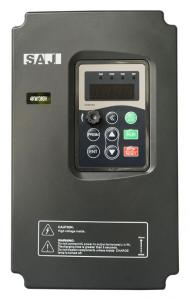Franklin Solar Pump L3D-20-360 Solar Water Pump
- Loading Port:
- China Main Port
- Payment Terms:
- TT OR LC
- Min Order Qty:
- -
- Supply Capability:
- 300 sets set/month
OKorder Service Pledge
OKorder Financial Service
You Might Also Like
Product description:
Product: Solar water pump
Model:L3D-20-360
Appilication:
surface pump
for surface water of pond, river, lake
for irrigation of a big farm with 10000 m2 on the top of a high mountain
Product specification:
flow rate:20m3/ hour, 140m3/day.
lift: 10m-360m
pump diameter: 610mm
Pump installed on the ground, outlet to the water surface:4m
with AC motor, motor power:22kW
but only need solar power:24kW(while Grundfos pump needs at least 45kW solar power, our pump can save more than 50% solar panel power,save USD15000 cost for solar panel per set.
Material:
Pump inside: stainless steel and wearable nylon,it enables our solar pump to have 10 years sevice life.
Motor : AC motor, 380V , three phase , 50Hz. The pump also can connect with grid power directly.
Certification:
3 International patent
ISO9001
CE
Warranty:2 years
- Q: Can a solar pump be used for water supply in mining operations?
- Yes, a solar pump can be used for water supply in mining operations. Solar pumps are a reliable and cost-effective solution for providing water in remote locations where access to electricity may be limited. They can be used to extract water from wells, rivers, or other water sources, and can be easily integrated into mining operations to ensure a sustainable and efficient water supply. Additionally, solar pumps are environmentally friendly, as they utilize renewable energy, reducing the carbon footprint of mining activities.
- Q: Can a solar pump be used in areas with low water table?
- Yes, a solar pump can be used in areas with low water tables. However, it is important to note that the efficiency of the pump may be affected in such areas. A low water table means that the distance between the ground surface and the water source is greater, requiring the pump to work harder to extract water. Additionally, the amount of water that can be pumped may be limited in areas with low water tables.
- Q: Are solar pumps more cost-effective than traditional pumps?
- Yes, solar pumps are more cost-effective than traditional pumps. While the initial investment for solar pumps may be higher, they have significantly lower operating costs over their lifetime. Solar pumps rely on renewable energy from the sun, eliminating the need for electricity or fuel, which can be expensive and subject to price fluctuations. Additionally, solar pumps require minimal maintenance and have a longer lifespan compared to traditional pumps, reducing replacement and repair costs. Furthermore, solar pumps often qualify for government incentives and subsidies, further reducing the overall cost. The cost-effectiveness of solar pumps is particularly evident in areas with abundant sunlight, as they can provide a reliable and cost-efficient water pumping solution, especially in remote or off-grid locations.
- Q: Can a solar pump be used for water features in gardens?
- Yes, a solar pump can be used for water features in gardens. Solar pumps use energy from the sun to power the pump, eliminating the need for electricity or batteries. They are an eco-friendly and cost-effective option for garden water features such as fountains, ponds, or waterfalls. Solar pumps are easy to install and maintain, and they provide a continuous flow of water without the need for manual operation. They are also versatile and can be adjusted to control the water flow and height, allowing for customization of the water feature. Overall, a solar pump is a great choice for adding a beautiful and sustainable water feature to your garden.
- Q: Are solar pumps maintenance-free?
- No, solar pumps require regular maintenance to ensure optimal performance and longevity.
- Q: Can a solar pump be used for water supply in disaster-affected areas?
- Yes, a solar pump can be used for water supply in disaster-affected areas. Solar pumps are a practical and reliable solution for providing access to clean water in areas where conventional power sources may be disrupted or inaccessible. Solar-powered pumps can operate independently, utilizing renewable energy from the sun to pump water from wells, rivers, or other water sources. Their portability and ease of installation make them particularly suitable for rapid deployment in emergency situations.
- Q: How does a solar pump help in reducing the risk of water conflicts?
- A solar pump helps in reducing the risk of water conflicts by providing a sustainable and reliable source of water without relying on limited or contested water resources. By harnessing the power of the sun, a solar pump can operate independently, reducing the need for traditional water extraction methods that may lead to conflicts over water rights or access. Additionally, solar pumps can be used in remote or off-grid areas, ensuring equitable access to water for communities that might otherwise be marginalized. Overall, by promoting self-sufficiency and reducing dependence on shared water sources, solar pumps contribute to mitigating water conflicts and promoting peace.
- Q: Can a solar pump work during cloudy days?
- Yes, a solar pump can still work during cloudy days. While the pump's efficiency may be reduced due to less sunlight, it can still generate power from diffuse light and continue to operate. The pump's output may be lower than on sunny days, but it can still function and provide water circulation or other intended purposes.
- Q: How does the performance of a solar pump vary with different sunlight intensities?
- Different sunlight intensities have an impact on the performance of a solar pump. Solar pumps are specifically designed to operate using solar energy, which means they are directly influenced by the level of sunlight available. When there is a high intensity of sunlight, indicating an abundance of sunshine, the performance of the solar pump is enhanced. This is due to the solar panels receiving more sunlight, resulting in the production of a greater amount of electricity. Consequently, the pump is powered to operate at its maximum capacity. The more intense the sunlight, the more energy is generated, leading to greater efficiency and functionality of the pump. Conversely, when there is low sunlight intensity, such as during cloudy or overcast days, the performance of the solar pump is diminished. This is because there is a reduced amount of sunlight available for the solar panels to convert into electricity. As a result, the pump may operate at a slower speed or even cease to function entirely if the sunlight intensity is excessively low. It is essential to acknowledge that the performance of a solar pump is not solely reliant on sunlight intensity. Other factors, such as the efficiency of the solar panels, the size of the pump, and the capacity of the battery (if applicable), also contribute to determining its overall performance. Nonetheless, sunlight intensity remains a crucial factor as it directly impacts the amount of energy that can be harnessed from the sun, thereby affecting the efficiency and output of the solar pump.
- Q: Can a solar pump be used for sewage or wastewater treatment?
- Yes, a solar pump can be used for sewage or wastewater treatment. Solar pumps are commonly used in wastewater treatment systems to circulate and transfer sewage or wastewater. They are efficient, cost-effective, and environmentally friendly as they rely on solar energy to operate, reducing the need for electricity or fuel. Additionally, solar pumps can be easily integrated into existing sewage or wastewater treatment plants, providing a sustainable solution for water management.
Send your message to us
Franklin Solar Pump L3D-20-360 Solar Water Pump
- Loading Port:
- China Main Port
- Payment Terms:
- TT OR LC
- Min Order Qty:
- -
- Supply Capability:
- 300 sets set/month
OKorder Service Pledge
OKorder Financial Service
Similar products
Hot products
Hot Searches
Related keywords
